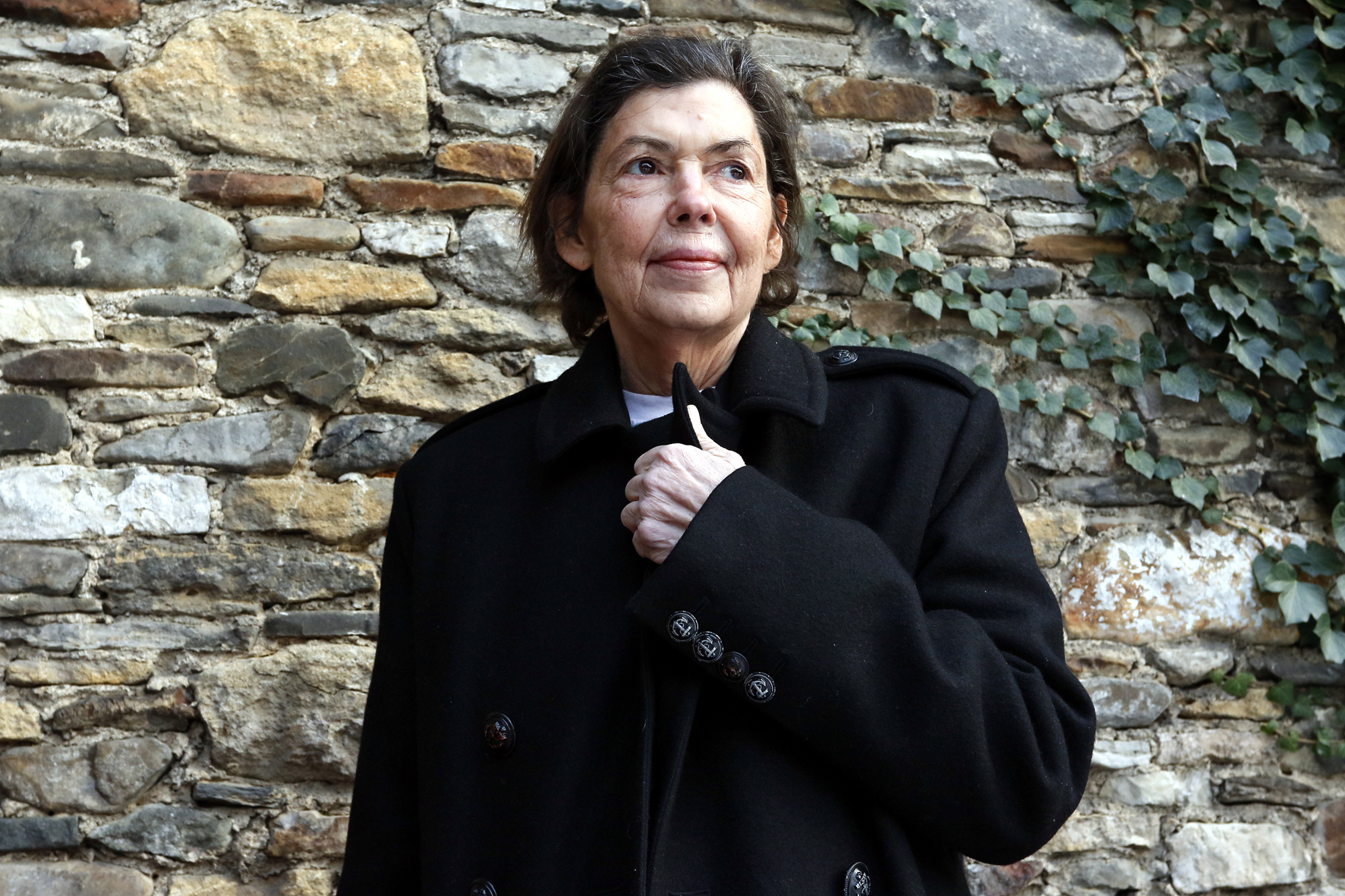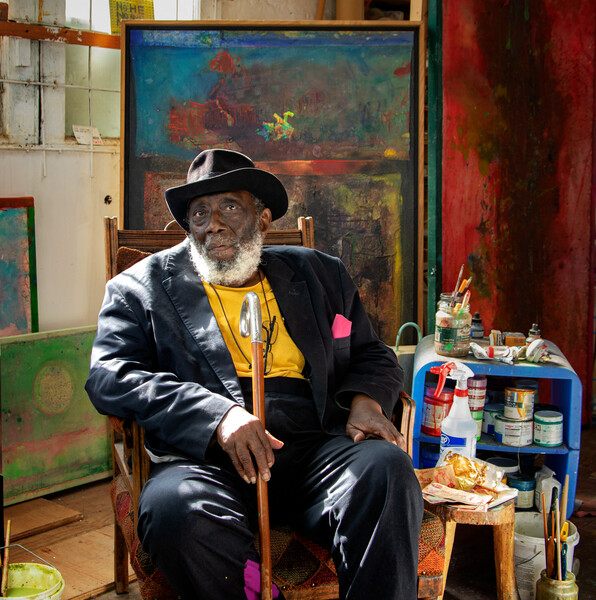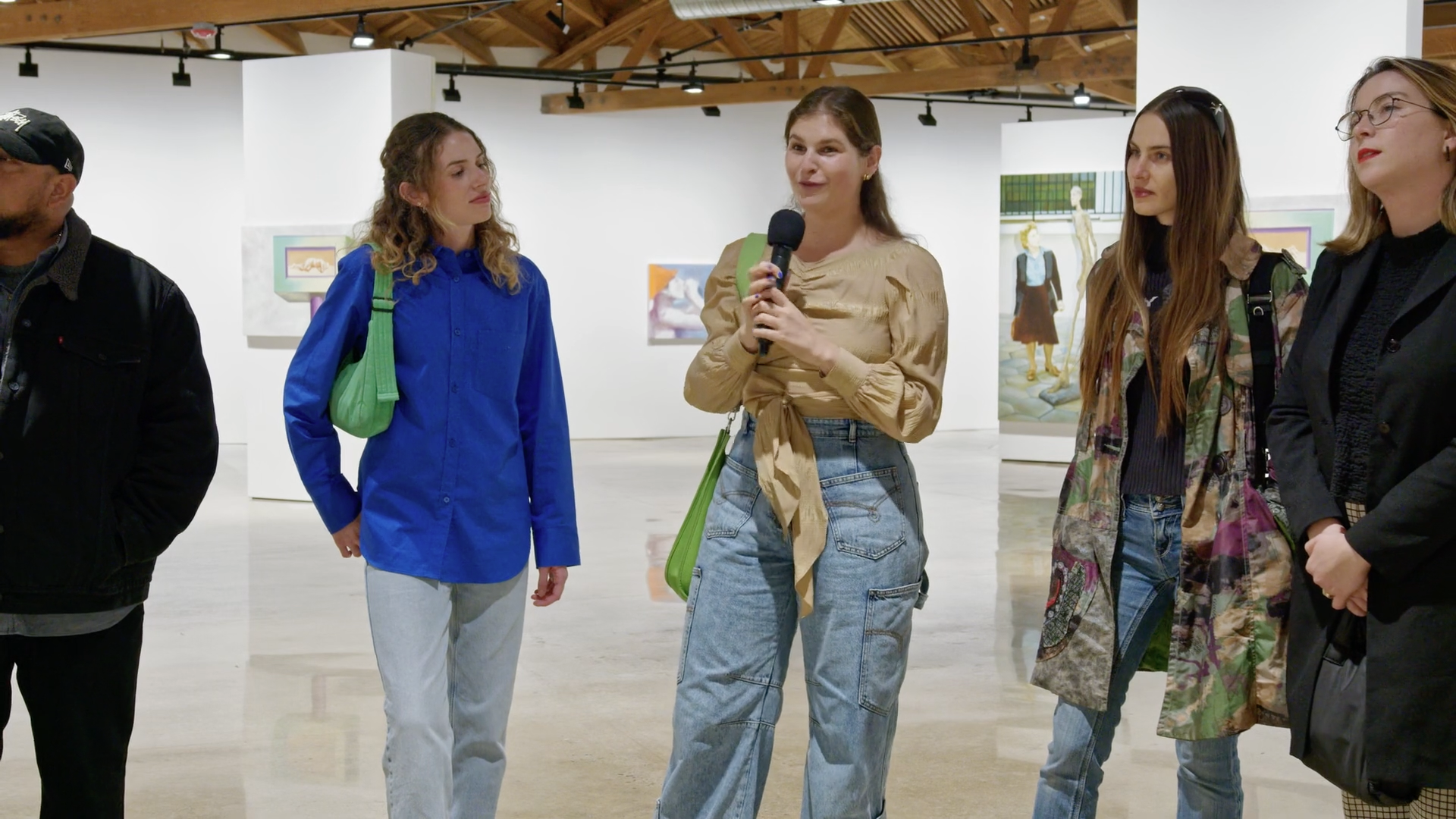
Isa Genzken, 2017 © Isa Genzken. All Rights Reserved, DACS 2024
Exhibition Learning Notes: ‘Isa Genzken. Wasserspeier and Angels’
This resource has been produced to accompany the exhibition ‘Isa Genzken. Wasserspeier and Angels’ at Hauser & Wirth London from 9 May – 27 July 2024.
Click here to download a PDF version of this resource.
About Isa Genzken
Isa Genzken has long been considered one of Germany’s most important and influential
contemporary artists. Born in Bad Oldesloe, Germany in 1948, Genzken studied at the
renowned Kunstakademie Düsseldorf whose faculty at the time included Joseph Beuys, Bernd
and Hilla Becher, Benjamin H.D. Buchloh and Gerhard Richter. Since the 1970s, Genzken’s
diverse practice has encompassed sculpture, photography, found-object installation, film,
drawing and painting.
Her work borrows from the aesthetics of minimalism, punk culture and assemblage art, often
addressing sociopolitical themes. Genzken is best known for her sculptures, gaining attention
for her minimalist oriented creations of the late 1970s, and more architecturally-inflected
structures and skyscraper columns from the 1990s. Genzken’s practice is incredibly wide ranging,
but her work remains dedicated to challenging the viewer’s self-awareness by means
of physically altering their perceptions, bringing bodies together in spaces and integrating
elements of a mixed media into sculpture.
What does the exhibition look like?
‘Wasserspeier and Angels’ is a revival of Genzken’s first major solo exhibition held in London
in 2004, also titled ‘Wasserspeier and Angels,’ which responded to Hauser & Wirth’s former
historic space in Piccadilly. The starting point came from the artist’s fascination with the
‘Wasserspeier’ (gargoyles) on Cologne Cathedral in Germany which the artist had seen being restored in
the building’s masonry shop. Having tried to convince the cathedral’s master builder to let her
take the carvings to London, Genzken instead created her own gargoyles for the exhibition,
setting them in dialogue with winged, angelic figures which take the form of pedestals cloaked
in blue plastic alluding to the wings of angels. However, the blue plastic sheeting could also
be interpreted as referencing the robes or gowns that appear on the pages attached to the
aluminium wall, these pages being taken from a book on Leonardo da Vinci. Genzken’s interest
in art and artists of other periods is also seen by her placement of a book about the Gothic
sculptor Tilman Riemenschneider within one of the installation elements.
In this exhibition, four ‘Wasserspeier’ on trolleys appear to skate on an aluminium floor. The shiny material enables the work to interact with the world around it, both literally through reflections and metaphorically by speaking to geopolitics. Gargoyles appear in folklore as creatures that can ward off harmful spirits and protect the buildings on which they are situated. They are often represented as a hybrid of animal and human forms. Within this installation, the artist does create figures of an anthropomorphic quality. They have heads and body-like frames with two of the figures even wearing the artist’s own clothing, a jacket and cap. The artist has also placed architecture books on two pedestals, prompting ideas that these could be proposals, reminders of New York City skyscrapers and demonstrating her love of architecture.
The first presentation of this work in 2004 marked Genzken’s inaugural show with the gallery but also captured a specific moment in time. Working in Berlin, Germany and in New York NY at the turn of the century, the artist witnessed the aftermath of the fall of the Berlin Wall and the subsequent changing landscape of the city, as well as the collapse of the World Trade Center in New York City. Although created 20 years ago, the installation still speaks to ongoing sociopolitical change in today’s world.

Installation view, ‘Isa Genzken. Wasserspeier and Angels,’ 2024, Hauser & Wirth London ©️ Isa Genzken. All Rights Reserved, DACS 2024. Photo: Alex Delfanne
‘I do not subtract space, I add to space.’—Isa Genzken, This is Isa Genzken/MOMA, 2013
How does she make her work?
Questions around how the human body interacts in and around spaces has occupied Genzken’s artistic practice for over 40 years. These explorations have predominantly taken the form of sculpture, but she also works across a diverse range of media including collage, works on paper and oil, photography, film, assemblage and installation. Genzken began creating work in the 1970s inspired by minimalism and constructivism. She utilized existing materials and everyday objects along with plaster and cement to create artwork that often held very personal views and sentiments about aspects of the world around her. And just as the world constantly changes, Genzken has also been keen that her working practice and methods never appear to become static and predictable.
What are her sources of subject matter?
Urban spaces, buildings (historic and contemporary) and human interaction with such environments are important reference points for Genzken’s practice.
New York City and its skyscrapers has been a life-long source of inspiration for the artist as can be seen in her three-volume collage book ‘I Love New York, Crazy City’ (1995 – 1996). The energy of cities in general is a running theme in her output as is evident from the appearance of columns and vertical structures in her work. The artist also draws on contemporary events as sources of subject matter such as the attacks on the World Trade Center on September 11, 2001.
What are the major themes within the exhibition?
Duality between the earth and heaven
A recurring theme throughout the artist’s career, with earthly concerns usually represented by materials associated with engineering and heaviness, such as electric cables, aluminium panels and trolleys. In contrast the sky or heavenly domain is symbolised by blue sheets, bright lamps and umbrellas.
Contrasts of strength and vulnerability
The grandeur and strength of architecture as expressed in the columns and pedestals within the installation is contrasted against a more fragile human spirit and vulnerable sense of nature through the inclusion of elements such as the sacrificial lamb, twigs and broken umbrellas.
Art in dialogue with the audience
Another recurring theme for Genzken is the ability of art to make the spectator reconsider their relationship to space and scale within an exhibition or urban environment. The choice of materials within this installation prompts the audience to walk around it, see themselves reflected within the shiny surfaces and be generally aware that the artist is welcoming their bodies as a component of this mixed media sculpture.

Installation view, ‘Isa Genzken. Wasserspeier and Angels’, 2024, Hauser & Wirth London ©️ Isa Genzken. All Rights Reserved, DACS 2024. Photo: Alex Delfanne
‘Many artists seem to work from a theory that they invent, so to speak, and which accompanies them through life, a theory they never deviate from. That is a certainty I do not like. After all, art is often on the edge in the sense that in one moment it seems really very close, and the next moment you find it does not.’—Isa Genzken, ArtForum, 2005
What other artists does her work relate to?
Tilman Riemenschneider (1460 – 1531) was a German sculptor working in medieval Europe during a period that art history terms the Late Gothic. He excelled in working in
wood and stone.
Lawrence Weiner (1942 – 2021) was an American artist and one of the leading figures of conceptual art in the 1960s and 1970s. He was an important advocate of the role that art and installation could play in altering physical spaces for audiences. Bruce Nauman (b.1941) is an American artist whose multidisciplinary practice incorporates sculpture, neon, photography, video and performance.
Gerhard Richter (b.1932) a German visual artist and renowned for not following singular approaches to painting. He is the ex-husband of Genzken.
Phyllida Barlow (1944 – 2023) created large-scale yet anti-monumental sculptures from inexpensive, low-grade materials such as cardboard, fabric, plywood, polystyrene, scrim, plaster and cement. Her invented forms stretch the limits of mass, volume and height
and challenge the audience into a new relationship with the sculptural object and gallery environment.
Nairy Baghramian (b.1971) creates work that encompasses sculpture, installation, photography and drawing. Her practice is experimental in its use of multiple techniques, materials and forms that regularly addresses architectural, social and political issues.

Installation view, ‘Isa Genzken. Wasserspeier and Angels’, 2024, Hauser & Wirth London ©️ Isa Genzken. All Rights Reserved, DACS 2024. Photo: Alex Delfanne
Glossary
Aesthetics
A philosophical set of ideas or assumptions on what beauty might be and how it can
be perceived.
Assemblage art
The incorporation of everyday, pre-existing objects by artists into sculptural works or installations.
Constructivism
An art movement that originated in Russia in the early 20th Century that took inspiration from industrial design, production and urban landscapes.
Gargoyles
Stone carved creatures of a fantastical and grotesque appearance often incorporated into medieval church architecture.
Installation
Installation art, also called ‘environments’ emerged as an immersive art form in the mid-20th Century. This type of art invites the public to step into spaces that are completely taken over by the artist’s creation and thereby ensure a more rounded interaction between viewer and art form.
Late Gothic
A style of medieval art that was dominant in Europe from the 12th – 15th Centuries. Artists took inspiration from religious sources with Gothic art mostly evident through the architecture and sculpture of cathedrals and religious sites.
Minimalism
An art movement of the 1960s and 1970s that originated in New York City which pared art making back to the essence of the object itself, largely excluding any external reference points or subjectivity.
Punk culture
A youth and countercultural movement of the late 1970s that strove for individual freedoms, a rejection of authoritarian and corporate control and embraced a distinctive style via art, music, and self-image.
Discussion questions
Audience interaction and self-awareness of space is an important topic for the artist and this installation. How does Genzken instigate an interaction with the spectator through her placement of elements and use of materials in this work?
Genzken’s creations are often connected or instigated by events or situations taking place in the world around her. Think about a recent national or international event that has left an impact in your memory. How would you represent this as an installation art piece and what materials would you use?
A punk counterculture and DIY ethos can be seen to run through Genzken’s career which has always made her stand out from the crowd. What artists today do you admire that have such a similar spirit of independence and experimentation?
Look for the items listed below within the installation. What do you feel they add to the nature of the artwork, and what do you think they might mean or represent for the artist?
• A flatiron and a clock
• Lambs and quail eggs
• Alligator heads and a toy chicken with a veil
• Torn umbrellas and twigs
• Oversize wine glasses and a bird of prey
• Toy figures arranged as in a model for a filmset
Supplementary research
File Downloads
Download Exhibition Learning NotesResources
1 / 8









